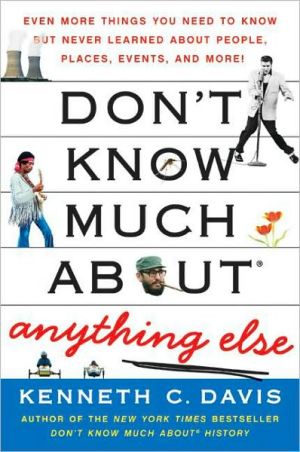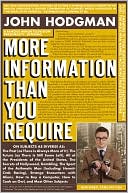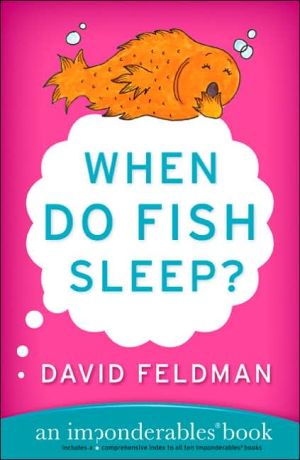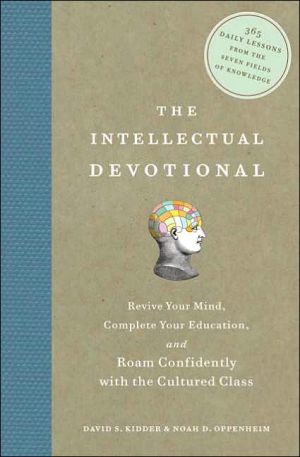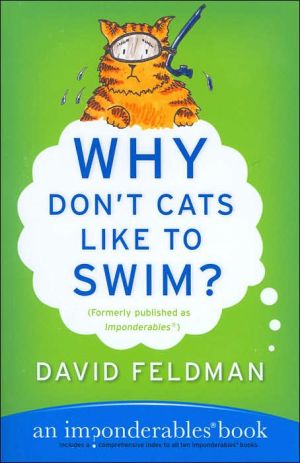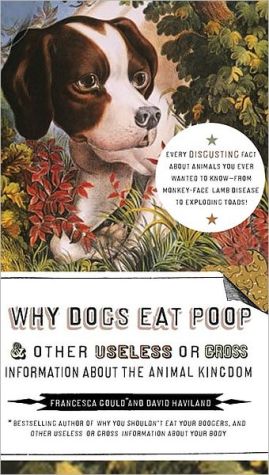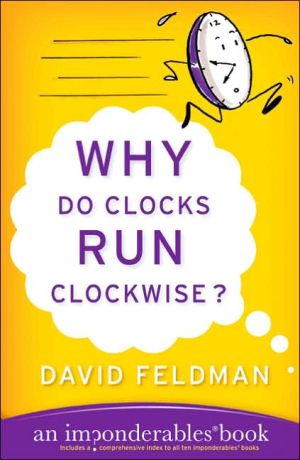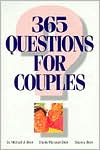Don't Know Much about Anything Else: Even More Things You Need to Know but Never Learned about People, Places, Events, and More!
For years, Kenneth C. Davis has enlightened and enthralled us, opening our minds and tickling our fancies with his wonderfully irreverent, fun, and factual Don't Know Much About® books. He has carried readers on wild and edifying rides through history, mythology, geography, the Bible, the Civil War, even across the universe. Now, following on the heels of his triumphant New York Times bestseller Don't Know Much About® Anything, comes Don't Know Much About® Anything Else, his latest one-stop...
Search in google:
For years, Kenneth C. Davis has enlightened and enthralled us, opening our minds and tickling our fancies with his wonderfully irreverent, fun, and factual Don't Know Much About® books. He has carried readers on wild and edifying rides through history, mythology, geography, the Bible, the Civil War, even across the universe. Now, following on the heels of his triumphant New York Times bestseller Don't Know Much About® Anything, comes Don't Know Much About® Anything Else, his latest one-stop potpourri of intriguing information. Chock-full of delightful historical snippets and fascinating people, remarkable milestones and boneheaded blunders, and eye-opening, brain-boggling facts about simply anything and everything in the world, here is the ideal companion for those long car rides, plane flights, quality family hours, or relaxing downtime.
Don't Know Much About Anything Else\ Even More Things You Need to Know but Never Learned About People, Places, Events, and More! \ \ \ By Kenneth Davis \ HarperCollins Publishers, Inc. \ Copyright © 2008 \ Kenneth Davis\ All right reserved.\ \ ISBN: 9780061562327 \ \ \ \ Chapter One\ Famous People\ Don't Know Much About\ Clara Barton\ On Christmas Day, 1821, an "Angel" was born. Youngest of five children, Clara Barton was born in Oxford, Massachusetts. During the Civil War, she carried supplies to soldiers and nursed the wounded, for which she was called the "Angel of the Battlefield." Her legacy didn't end there as she founded the American Red Cross. Barton's thirty-eight-room home in Glen Echo, Maryland—where she died in 1912—was also the headquarters of the American Red Cross for several years and is now a National Historic site. What else do you know about this trailblazing "Angel" of mercy?\ True or False?\ \ \ \ \ Barton was a trained nurse.\ When the war started, she worked in the U.S. Patent Office.\ Barton was appointed head of nurses when the war started.\ When the Civil War ended, she led the effort to locate missing soldiers.\ The Red Cross was her idea.\ The Red Cross originally assisted only soldiers.\ \ \ \ \ Answers\ \ \ \ \ False. Educated at home, she became a schoolteacher and her only medical experience was nursing an invalid brother, including applying leeches, a medical practice of the day.\ True. She was the first female clerk in what is now the Patent and Trademark Office.\ False. When the war broke out, she began a volunteer effort to carry medical supplies to the battlefield. But the government initially refused to give her help. In 1864, she was appointed superintendent of nurses for the Army of the James, a division of the Union forces.\ True. Barton formed a bureau to search for missing men and the office marked more than 12,000 graves in the infamous Andersonville prison in Georgia.\ False. In 1869, she went to Europe and learned of the International Committee of the Red Cross, based in Geneva. She took part in Red Cross activities during the Franco-Prussian War and when she returned to America campaigned for the establishment of the American branch of the Red Cross. She became its first president when it was founded in 1881. She also urged the United States government to ratify the Geneva Convention, which was done in 1882.\ True. Barton was responsible for the clause in the Red Cross constitution that provides for civilian relief in peacetime calamities. It is known as the "American Amendment."\ \ \ \ \ Dont Know Much About\ Salvador Dalí\ "Every morning when I awake, the greatest of joys is mine: that of being Salvador Dalí." That outsized ego and showman's flair helped make Salvador Dalí one of the world's most recognizable artists. Born on May 11, 1904, in Figueres in Spain's Catalonian region, Dalí was an eccentric master whose abstract paintings, filled with bizarre images, are still extremely popular. Dalí died on January 23, 1989, in his hometown, where he is buried in the museum he built for himself. What do you know about this famed painter, whose wild mustache and love for the unusual were as famous as his art?\ True or False?\ \ \ \ \ Dalí is best known for the style called "cubism."\ Besides his paintings and lithographs, Dalí's most famous work is the notable short film Un Chien Andalou.\ A committed Communist, Dalí fought in the Spanish Civil War against General Franco.\ Dalí collaborated with both Alfred Hitchcock and Walt Disney.\ \ \ \ \ Answers\ \ \ \ \ False. Dalí's most famous work, including the painting The Persistence of Memory, is surrealist, which uses fantastic images to convey what Dalí called "hand-painted dream photographs." Cubism is usually associated with fellow Spaniard Picasso, whom Dalí greatly admired.\ True. The sixteen-minute film made with Luis Buñuel is a surrealist classic with such shocking images as a woman's eyeball being sliced.\ False. Briefly a Communist, Dalí left Spain during its Civil War and was later criticized when he returned to Spain and praised General Franco's repressive Fascist regime.\ True. He worked on a dream sequence in Hitchcock's film Spellbound and collaborated with Disney on Destino, begun in 1945 and finally released in 2003.\ \ \ \ \ Don't Know Much About\ Hans Christian Andersen\ The son of A poor shoemaker, born in Denmark on April 2, 1805, Hans Chris-tian Andersen (18051875) became one of the world's most famous authors. After his father's death, the young boy set out to become a singer and actor, but had little luck until he turned to writing children's stories in 1835. His famed tales, often of luckless but goodhearted people—and animals—who find their fortune, have mesmerized readers ever since. What do you know about the man behind "The Ugly Duckling" and "The Little Mermaid"?\ \ In which story does a child say, "But the Emperor has nothing on"?\ What really became of the Little Mermaid? Where is her famous statue located?\ What is the test of "The Real Princess"?\ What real person inspired Andersen to write "The Nightingale"?\ Who played Andersen in the 1952 film based on his life and stories?\ True or False? All of Andersen's 156 fairy tales are based on old folk tales.\ \ \ \ \ Answers\ \ "The Emperor's New Clothes."\ In the original, she is turned into sea foam after her prince marries another girl. The statue, which has been vandalized on several occasions, is in Copenhagen's harbor.\ She could feel three peas through twenty mattresses and twenty featherbeds.\ The famed singer Jenny Lind, known as the "Swedish Nightingale," who was Andersen's great unrequited love.\ Danny Kaye.\ False. All but twelve are original stories.\ \ \ \ \ \ Continues... \ \ \ \ Excerpted from Don't Know Much About Anything Else by Kenneth Davis\ Copyright © 2008 by Kenneth Davis. Excerpted by permission.\ All rights reserved. No part of this excerpt may be reproduced or reprinted without permission in writing from the publisher.\ Excerpts are provided by Dial-A-Book Inc. solely for the personal use of visitors to this web site.\ \
